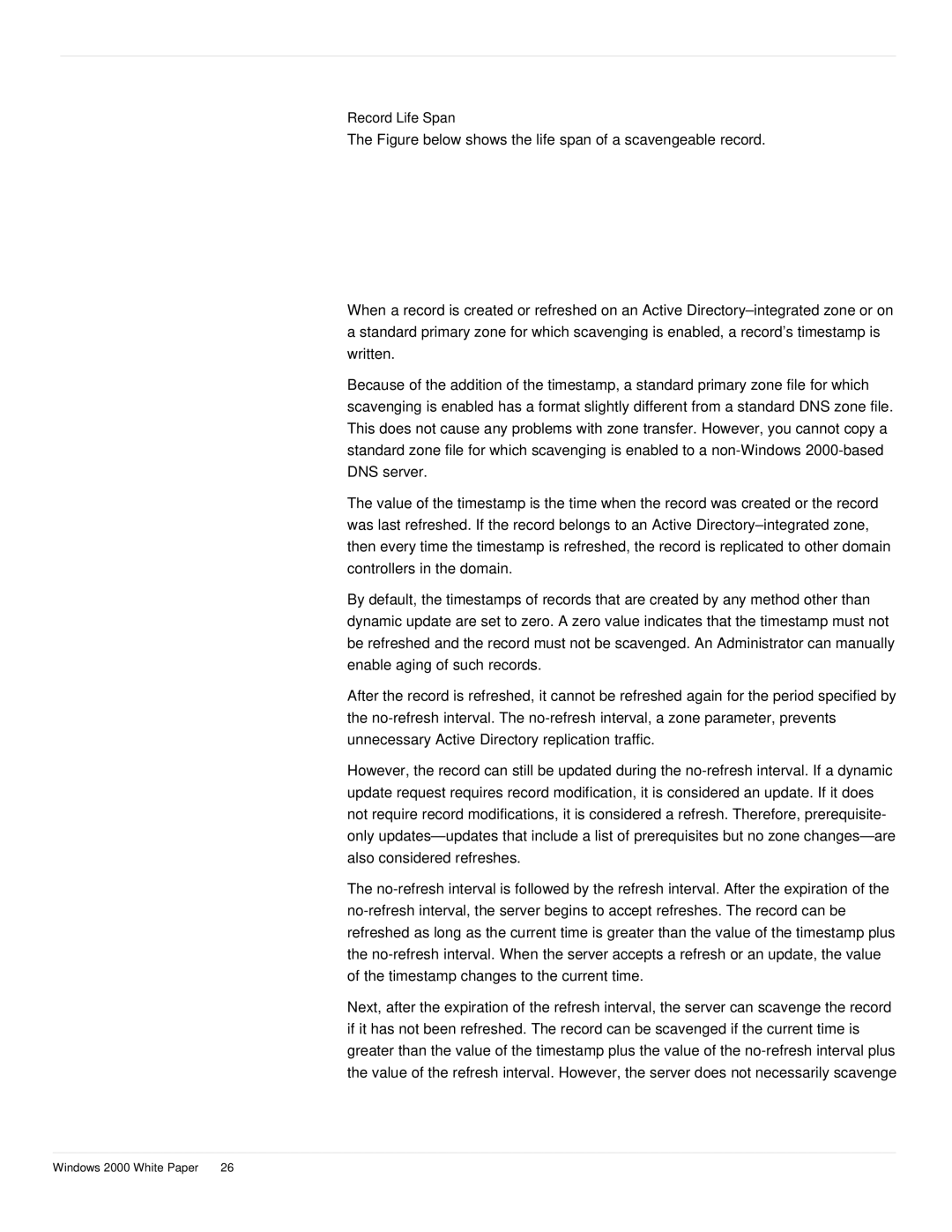
Record Life Span
The Figure below shows the life span of a scavengeable record.
When a record is created or refreshed on an Active Directory–integrated zone or on a standard primary zone for which scavenging is enabled, a record’s timestamp is written.
Because of the addition of the timestamp, a standard primary zone file for which scavenging is enabled has a format slightly different from a standard DNS zone file. This does not cause any problems with zone transfer. However, you cannot copy a standard zone file for which scavenging is enabled to a non-Windows 2000-based DNS server.
The value of the timestamp is the time when the record was created or the record was last refreshed. If the record belongs to an Active Directory–integrated zone, then every time the timestamp is refreshed, the record is replicated to other domain controllers in the domain.
By default, the timestamps of records that are created by any method other than dynamic update are set to zero. A zero value indicates that the timestamp must not be refreshed and the record must not be scavenged. An Administrator can manually enable aging of such records.
After the record is refreshed, it cannot be refreshed again for the period specified by the no-refresh interval. The no-refresh interval, a zone parameter, prevents unnecessary Active Directory replication traffic.
However, the record can still be updated during the no-refresh interval. If a dynamic update request requires record modification, it is considered an update. If it does not require record modifications, it is considered a refresh. Therefore, prerequisite- only updates—updates that include a list of prerequisites but no zone changes—are also considered refreshes.
The no-refresh interval is followed by the refresh interval. After the expiration of the no-refresh interval, the server begins to accept refreshes. The record can be refreshed as long as the current time is greater than the value of the timestamp plus the no-refresh interval. When the server accepts a refresh or an update, the value of the timestamp changes to the current time.
Next, after the expiration of the refresh interval, the server can scavenge the record if it has not been refreshed. The record can be scavenged if the current time is greater than the value of the timestamp plus the value of the
Windows 2000 White Paper | 26 |
